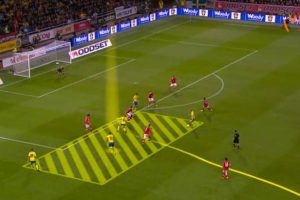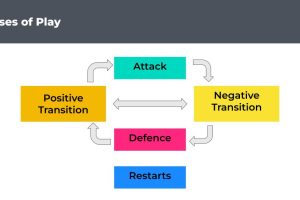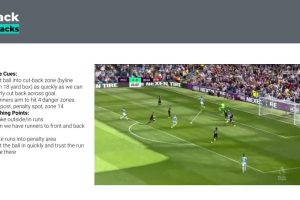Pixellot vs Veo: A Comprehensive Comparison Guide
In the world of sports recording technology, two leading companies have emerged as top choices for capturing high-quality game footage: Pixellot and Veo. Both companies aim to provide solutions that make recording and analyzing games more accessible for coaches, players, and fans. However, given the wide range of options and features, it might be difficult for potential users to determine which system is the best fit for their needs.
Pixellot is known for its state-of-the-art automated video production system that utilizes artificial intelligence to track and follow the game action in real-time. This AI technology eliminates the need for a camera operator, enabling users to focus on the game itself. On the other hand, Veo is a user-friendly soccer recording solution producing high-quality footage with a 180-degree camera. This cutting-edge technology is designed to cater to both amateurs and professional soccer teams looking for an efficient way to record their games and improve their tactics.
Key Takeaways
- Pixellot and Veo are leading sports recording solutions offering advanced features for capturing high-quality game footage.
- The use of artificial intelligence in both systems enables real-time tracking, allowing users to focus more on their game.
- I use VEO for my club, but I’m a huge fan of Pixellot, and I think if I were to start from scratch, I’d choose Pixellot from the two. But you really can’t go wrong with either.
Pixellot Overview
Pixellot is a cutting-edge camera system designed to auto-record sports games, practices, and events. This advanced technology benefits teams, coaches, and players by providing seamless, high-quality coverage of games without the need for a dedicated camera operator.
The Pixellot system features a set of cameras called Pixellot Air, which are positioned strategically around the venue to optimize coverage. These cameras effortlessly capture the action on the field, recording games and events in stunning detail. The automated technology is particularly popular among high schools and other educational institutions due to its ease of use and cost-effectiveness.
One of the notable aspects of Pixellot is its artificial intelligence (AI) capabilities. The AI-driven software enables the system to understand the game flow, focus on key moments, and create dynamic camera angles. This results in engaging and professional-looking footage that viewers can stream or download.
Furthermore, Pixellot allows users to upload their recorded games to a dedicated platform where they can be watched, shared, or analyzed. This feature greatly simplifies the process of video distribution, making it more accessible for players, coaches, and fans to enjoy the footage.
In summary, Pixellot offers a robust and versatile camera system that makes it easy to record and share high-quality sports footage. Its advanced AI technology and user-friendly platform cater to the needs of various sports organizations, including high schools, by providing an efficient and cost-effective solution for capturing games and events.
You can read more about Pixellot here.
Veo Overview
Veo is a cutting-edge camera solution designed to enable easy recording and analysis of various sporting events, particularly soccer games. Hailing from Denmark, the company has developed an advanced artificial intelligence-driven camera system that eliminates the need for a dedicated camera operator.
The Veo camera is specially designed to capture games at various levels, from youth leagues to high school matches. Utilizing its sophisticated artificial intelligence algorithms, the camera automatically follows the ball and the action on the field, providing a smooth and comprehensive viewing experience for athletes, coaches, and spectators alike.
Setting up the Veo camera is a simple process, typically involving mounting it on a tripod and connecting it to a power source. Once the game is recorded, the footage can be easily uploaded to Veo’s cloud platform. This makes it convenient for coaches, players, and fans to watch, analyze, and download the recorded games at their leisure.
One of the most significant features of the Veo camera system is its ability to automatically create highlights and tag key events in the recorded games. This is particularly useful for coaches who can use the insights provided by the system to help their teams improve their performance on the field. Additionally, players can leverage the tagged highlights to showcase their skills and achievements to prospective clubs and recruiters.
In summary, the Veo camera is a powerful and user-friendly tool for recording and analyzing soccer games at various levels. Its state-of-the-art artificial intelligence capabilities, seamless recording process, and easy-to-use platform, make it an invaluable asset for coaches, players, and spectators alike. With its roots in Denmark, Veo has successfully brought cutting-edge technology into the sporting world, enhancing the way games are documented and analyzed for the better.
AI in Pixellot and Veo
Use of AI in Pixellot
Pixellot utilizes artificial intelligence to offer automated sports video production for both amateur and professional teams. Their AI-driven solution replaces the need for manual videographers and allows users to focus on improving their gameplay. The system is capable of identifying key moments and highlights in a match, providing valuable insights to coaches and players.
The AI technology behind Pixellot can detect and track the action on the field by using machine learning algorithms. These algorithms are designed to distinguish between different types of events and actions, such as passes, shots, and goals. The system’s ability to analyze sports events assists in capturing important data, making it an effective coaching tool for teams of all levels.
You can save 10% of Pixellot here.
Use of AI in Veo
Similarly, Veo’s AI camera system is revolutionizing the way soccer teams capture and analyze their game footage. The Veo camera uses artificial intelligence to record training sessions and matches, automatically tracking the movement on the field without requiring a human operator. This easy-to-use technology allows for teams to have access to high-quality footage, which can be analyzed further to improve performance.
Veo’s AI system is capable of recognizing key events during the game, such as goals, tackles and assists. It tracks the ball and individual players, providing a comprehensive view of the match. By capturing this data, Veo empowers coaches and players to gain a deeper understanding of their performance and work on enhancing their skills.
Both Pixellot and Veo demonstrate the powerful role of AI in the realm of sports analytics. Their AI-driven solutions offer an innovative approach to video analysis, providing essential data to improve gameplay and support the development of players at all levels.
Features Comparison
Recording and Sharing
Both Pixellot and Veo offer user-friendly platforms for recording and sharing soccer games. With Pixellot, coaches and teams can easily record games using their Pixellot Air camera system, which provides high-quality footage. The recorded games can be uploaded to the Pixellot app, allowing for easy sharing with team members and parents, as well as the creation of highlight clips.
Similarly, Veo provides a high-quality camera system that captures 180-degree footage without the need for a camera operator. The recorded games can be uploaded to the Veo platform, where coaches and teams can create and share highlight clips. Both platforms enable teams to review game footage and improve their performance.
Camera Systems
Pixellot and Veo camera systems have unique features that cater to different user preferences. The Pixellot Air camera system offers a portable, lightweight solution with a pole and mount setup that allows for 360-degree panning. It uses a wide-angle lens to capture a full view of the field.
On the other hand, Veo features a tripod-mounted camera with two 4K lenses, capturing a 180-degree view of the field. Veo’s camera uses artificial intelligence to automatically track the ball and players during the game.
Support and Repair
Both Pixellot and Veo offer dedicated customer support and repair services to ensure smooth operations. Pixellot provides responsive support through email and phone, helping customers troubleshoot any issues while using their camera systems. They also offer repair services in case of hardware malfunctions or damage.
Veo also offers comprehensive customer support, including a help center with articles and video tutorials. In case of hardware issues, Veo provides repair services, ensuring their customers can get back to recording and analyzing soccer games with minimal downtime.
Complementary Products
In the world of sports recording and analysis, both Veo and Pixellot offer advanced solutions to capture footage and analyze performance. However, several complementary products can expand the capabilities and enhance user experience.
Hudl is a popular choice amongst coaches and athletes, offering not only video recording but also in-depth analysis tools, cloud storage, and an extensive platform for collaboration. Compatible with various sports, this comprehensive system simplifies player evaluations and game planning tasks.
Trace is another alternative that focuses on utilizing artificial intelligence in sports analytics. This platform incorporates innovative player-tracking technology and personalized statistics to deliver intelligent performance insights and assessments, taking athlete evaluation to new heights. I’m a huge fan of the ideas that Trace are using. I think it’s the way forward.
Pix4Team is a system that specifically targets soccer teams, offering a comprehensive video analysis platform. As a robust and streamlined solution, it covers in-game and post-game analytics, providing an excellent option for teams to analyze and improve their performance.
Sideline is a specialized software tool designed to streamline sideline video exchange between teams. By offering an efficient system for sharing video clips, it fosters collaboration and communication, helping teams to enhance their strategies and tactics during the game.
Lastly, editing software plays a crucial role in the process of analyzing sports footage. High-quality video editing tools enable coaches and analysts to splice, slow down, or annotate videos to effectively communicate key insights to players.
These complementary products can be considered alongside Veo and Pixellot, adding valuable features that assist in athlete development and team success.
Specific Sport Use
Soccer Camera Usage
Pixellot and Veo are two well-known soccer camera systems designed to capture game footage effectively. Both systems offer advanced features for soccer teams, providing a comprehensive solution to analyze and share match content.
Pixellot systems use multiple cameras and AI technology to record the entire field, automatically tracking the ball and players. This allows coaches and teams to easily review footage and gain insights about their performance. The system also offers camera angles and zoom capabilities, which are helpful for analyzing plays and techniques.
Veo cameras, on the other hand, utilize two 4K lenses mounted on a portable tripod to capture a 180-degree panoramic view of the field. The footage is later stitched together and processed using AI, resulting in a complete view of the game. Veo also offers tools for video tagging, allowing coaches to easily identify key moments and analyze player performance.
Basketball Camera Usage
For basketball teams, finding a camera system that can capture game footage with high-quality detail in an often fast-paced and confined environment is essential. When considering using Pixellot or Veo for basketball games, it’s crucial to understand the features and performance of each system in this context.
Pixellot has a range of camera systems designed for indoor sports, including basketball. The multi-camera setup captures the entire court, providing multiple angles to analyze player movement and positioning. Its AI technology automatically tracks the action, ensuring consistent and comprehensive coverage of the game.
Veo can also be used in basketball games, as its panoramic view effectively captures the entire court. The AI features allow for tracking the ball and players, making it easier for coaches to review and analyze the footage. Nevertheless, the predominantly soccer-focused system may not offer as many tailored features for basketball as Pixellot.
In conclusion, both Pixellot and Veo provide useful solutions for capturing game footage in soccer and basketball, allowing teams to analyze and improve their performance. Each system has its unique features, and deciding between them will largely depend on a team’s specific needs and preferences.
Advanced Analytics
Pixellot and Veo are both renowned for offering advanced analytics in the sports industry. These companies provide automated video recording and analysis solutions, making it possible for sports clubs, coaches, and players to benefit from data-driven insights.
In the case of Pixellot, their technology uses multiple high-resolution cameras and AI algorithms to record, analyze, and process sports events. The captured video footage is then edited into various views, such as panoramic and tracking views, to provide comprehensive coverage of the game. In addition, Pixellot’s advanced analytics enable users to access in-depth performance statistics, player tracking, and even create sports highlights with ease.
On the other hand, Veo offers a similar technology, utilizing AI-powered camera systems to record and analyze soccer games automatically. They also provide advanced analytics and interactive playback of the recorded footage. Veo’s platform enables users to access various metrics, such as heatmaps, player positions, and key events during the game, giving valuable insights to coaches and players for performance improvement.
When it comes to analytics, both Pixellot and Veo have distinct features that cater to the needs of their users:
- Player tracking: Both systems can automatically track and analyze the movements of individual players throughout the match, allowing for the assessment of their performance, stamina, and overall contribution to the game.
- Heatmaps: Heatmaps are provided by both platforms to visualize player activity on the field, demonstrating patterns in player positioning and team dynamics.
- Event tagging and filtering: Both Pixellot and Veo enable users to tag and filter important events in the game, making it easy to review relevant moments of gameplay during post-match analysis.
Despite the similarities in their offerings, there may be differences in the level of detail and user experience each platform provides, depending on the specific sport or audience they are tailored for. However, both Pixellot and Veo are strong contenders in the sports analytics market, continuously innovating and adapting to the ever-growing demand for sophisticated data-driven insights.
Cost Comparison
When comparing the costs of Pixellot and Veo, it is essential to consider both the upfront costs and the ongoing subscription fees associated with each system.

The Veo camera costs can vary depending on the package chosen. They offer two subscription plans: the “Plus” plan, which costs $1,199 per year, and the “Pro” plan, which costs $2,199 per year. This subscription fee includes access to their analysis platform and cloud storage. The Veo camera itself can be purchased for $1,099.
On the other hand, Pixellot’s pricing is more tailored to individual needs. The base price for a Pixellot camera setup can vary from $3,000 to $5,000, depending on the specific model and its unique features. Additional costs may include an annual subscription fee, which can range from $1,000 to $3,000, depending on the scale of implementation and the level of access to their analytic tools.

While Veo might appear to be the cheaper option upfront, it is crucial to consider the long-term costs and features each platform offers. Veo’s annual subscription fees might be more accessible for smaller teams or organizations, while Pixellot can offer more advanced analysis tools and features, which can be more suitable for larger clubs or professional organizations.
In conclusion, both Veo and Pixellot offer unique solutions for capturing and analyzing soccer games. It is essential to weigh each organisation’s specific needs, budget, and requirements before deciding on the best choice.
Company Information
Pixellot Location
Pixellot, a leader in the sports analytics sector, is headquartered in Petach Tikva, Israel1. With a confident and knowledgeable approach, Pixellot offers advanced video analytics solutions using AI technology.
Veo Location
Veo, another prominent company in the sports analytics industry, was founded in Copenhagen, Denmark in 20152. Known for their cutting-edge AI and video analysis solutions, the company has grown significantly over the years, currently employing around 70 more people than Pixellot3.
Both Pixellot and Veo have become competitors in providing video analytics software for sports, contributing to the development and growth of the sector. Their advanced technology and unique features have allowed both companies to make their mark in the industry.
Footnotes
Frequently Asked Questions
How do Pixellot and Veo compare in video quality?
Pixellot and Veo both offer high-quality video recording options for sports teams. However, the specific video quality may vary depending on factors such as camera placement and lighting conditions. It is essential for teams to test and compare the video quality of both systems to determine which one suits their needs best.
What are the price differences between Veo and Pixellot cameras?
Pricing for Veo and Pixellot cameras can vary depending on factors such as product model, features, and subscription plans. Visiting the respective company websites for detailed pricing information and possible discounts is advised.
How does Pixellot’s performance compare to competitors like Hudl and Trace?
Pixellot and competitors like Hudl and Trace are among the top players in sports video analytics. Each company offers its unique features and capabilities. Performance comparison should ideally be based on your team’s needs and preferences, such as video quality, analytical tools, and ease of use.
Which camera is better for soccer: Veo, Trace, or Pixellot?
There is no definitive answer as to which camera is the best for soccer among Veo, Trace, and Pixellot. Each system offers a unique set of features and capabilities. Some teams may prefer Veo for its user-friendly interface, while others might gravitate toward Pixellot or Trace. Evaluating how each system aligns with your team’s specific requirements and goals is essential.
What are the best alternatives to Veo and Pixellot cameras?
Aside from Veo and Pixellot, other soccer camera alternatives include Trace, Pix4Team, and Reeplayer. Different systems cater to varying needs and preferences, so it is vital to explore these options and determine which solution best suits your team. You can find more information about these alternatives in resources such as this YouTube video.
Are there any noteworthy differences in features and functionality between Veo and Pixellot?
Both Veo and Pixellot offer advanced features and functionality for sports analytics. However, there may be some differences in their individual offerings. Teams should carefully evaluate aspects such as ease of use, availability of analytical tools, and the level of customization each system provides. Ultimately, the choice between Veo and Pixellot depends on your team’s specific needs and preferences.







